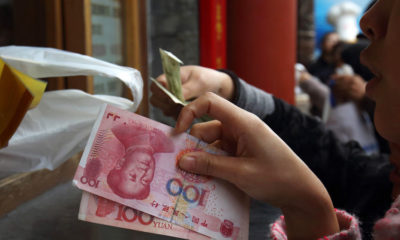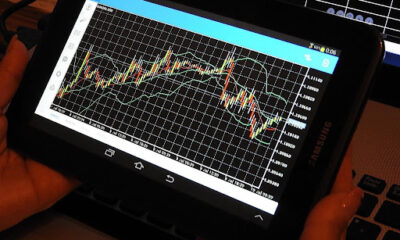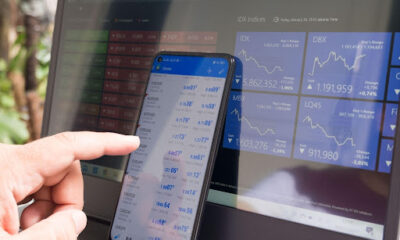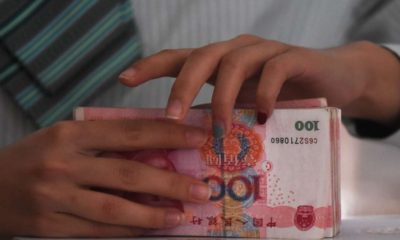Business News
Navigating the Currency Maze: Understanding the Different Types of Forex Pairs
Published
1 month agoon

In the vast ocean of global finance, the foreign exchange (forex) market stands as the largest and most liquid financial marketplace in the world. With daily trading volumes exceeding $6 trillion, forex trading attracts everyone from institutional investors to individual traders seeking opportunities in currency fluctuations. At the heart of this market are currency pairs—the building blocks of forex trading. But not all currency pairs are created equal. Each comes with its own characteristics, volatility patterns, and trading considerations.
Major Forex Pairs: The Market Heavyweights
The foundation of the forex market rests on what traders commonly refer to as the “major forex pairs.” These currency combinations involve the U.S. dollar (USD) paired with other major economies’ currencies. The majors account for approximately 75% of all forex trading volume worldwide, making them the most liquid and widely traded instruments in the market.
The primary major pairs include:
- EUR/USD (Euro/U.S. Dollar) – The world’s most traded pair, often called “the fiber”
- USD/JPY (U.S. Dollar/Japanese Yen) – Known as “the gopher” among traders
- GBP/USD (British Pound/U.S. Dollar) – Commonly referred to as “cable”
- USD/CHF (U.S. Dollar/Swiss Franc) – Sometimes called “the swissy”
- USD/CAD (U.S. Dollar/Canadian Dollar) – Known as “the loonie”
- AUD/USD (Australian Dollar/U.S. Dollar) – Often called “the aussie”
- NZD/USD (New Zealand Dollar/U.S. Dollar) – Known as “the kiwi”
What makes these pairs attractive to traders is their narrow bid-ask spreads, excellent liquidity, and the abundance of market analysis and information available. For beginners, major pairs often represent the safest entry point into forex trading due to their predictable behavior and lower trading costs.
James Harrison, a veteran forex trader with over 15 years of experience, explains: “The major pairs give you the best combination of liquidity and reasonable volatility. You can enter and exit positions easily without significant slippage, which is crucial when you’re managing risk carefully.”
Minor Pairs: Beyond the Dollar’s Dominance
Minor pairs, sometimes called cross-currency pairs, don’t include the U.S. dollar. Instead, they pair other major currencies against each other. Before electronic trading became widespread, traders would have to use the dollar as an intermediary when exchanging currencies like the euro for the yen. Today, these pairs trade directly, offering additional opportunities for traders.
Common minor pairs include:
- EUR/GBP (Euro/British Pound)
- EUR/JPY (Euro/Japanese Yen)
- GBP/JPY (British Pound/Japanese Yen)
- EUR/CHF (Euro/Swiss Franc)
- EUR/CAD (Euro/Canadian Dollar)
- AUD/JPY (Australian Dollar/Japanese Yen)
Minor pairs typically have slightly wider spreads than majors but still offer good liquidity. They can be particularly useful for traders looking to express views on specific economies without the influence of the U.S. dollar.
“Cross pairs give you unique trading opportunities when you have a strong view on the relative strength of two non-dollar economies,” notes Sophie Chen, a currency strategist at Global Market Insights. “For instance, if you believe the European economy will outperform Britain, the EUR/GBP pair allows you to trade that view directly.”
Exotic Pairs: Higher Risk, Greater Reward
Exotic currency pairs match a major currency with the currency of an emerging or smaller economy. Examples include USD/TRY (U.S. Dollar/Turkish Lira), USD/ZAR (U.S. Dollar/South African Rand), and USD/MXN (U.S. Dollar/Mexican Peso).
Trading exotic pairs comes with distinct challenges. These markets typically feature:
- Wider spreads, increasing trading costs
- Lower liquidity, potentially causing slippage
- Higher volatility, amplifying both profit potential and risk
- Greater influence from local political and economic factors
USD/TRY has earned a reputation as the most volatile forex pair in recent years, with dramatic swings driven by Turkey’s economic policies, inflation concerns, and geopolitical developments. While this volatility creates opportunities for substantial profits, it equally increases the risk of significant losses.
“Exotic pairs require a deeper understanding of the specific country’s economic and political landscape,” warns Dr. Maria Rodriguez, an economist specializing in emerging markets. “What might seem like an obvious trade based on technical analysis could be quickly derailed by a central bank intervention or unexpected political development.”
Regional Pairs: Geographic Groupings
Some traders categorize currency pairs by geographic region, focusing on Asian pairs (like USD/SGD, USD/HKD), Scandinavian pairs (like USD/NOK, USD/SEK), or commodity pairs (like USD/CAD, AUD/USD, NZD/USD). This regional approach allows traders to specialize in particular economic zones and develop expertise in the factors that influence currencies within those regions.
Understanding Forex Correlation Pairs
One of the most sophisticated aspects of currency trading involves understanding forex correlation pairs – relationships where currency pairs move in tandem or opposite directions. These correlations aren’t fixed and can change over time based on evolving economic relationships and market conditions.
For example, EUR/USD and GBP/USD often show positive correlation, meaning they tend to move in the same direction. In contrast, EUR/USD and USD/CHF typically display negative correlation, moving in opposite directions.
Trading correlation requires careful analysis and monitoring. Alex Thornton, a quantitative analyst at FX Metrics, explains, “Correlation awareness can help you avoid unintentionally doubling your risk exposure. If you’re long EUR/USD and GBP/USD simultaneously without understanding their correlation, you might be taking on more concentrated risk than you realize.”
Smart traders use correlation data to:
- Diversify their portfolio by selecting pairs with low correlations
- Hedge positions by taking opposing positions in highly correlated pairs
- Identify potential arbitrage opportunities when correlations temporarily break down
Selecting the Right Pairs for Your Trading Style
The pairs you choose to trade should align with your trading goals, risk tolerance, and available trading hours. Here are some considerations:
For Day Traders and Scalpers
Major pairs are often ideal due to their tight spreads and constant liquidity. The EUR/USD pair is particularly popular among these traders because it strikes a balance between having enough volatility to generate opportunities while remaining relatively predictable.
For Swing Traders
Minor crosses can offer excellent opportunities for multi-day positions, as they sometimes develop clearer trends than major pairs. Pairs like EUR/GBP often show more sustained directional movements that work well for swing trading strategies.
For Fundamental Traders
Exotic pairs may appeal to those who have specialized knowledge of emerging economies or who wish to capitalize on significant interest rate differentials. The higher volatility in these pairs can result in substantial moves when fundamental factors change.
For Correlation Traders
Sophisticated strategies involving multiple pairs require a deep understanding of forex correlation pairs and how these relationships evolve during different market conditions. These approaches often involve simultaneous positions in several currency pairs based on their historical relationship patterns.
Conclusion: Finding Your Path in the Currency Maze
The diversity of currency pairs in the forex market offers something for every trading style and risk appetite. From the liquid efficiency of major forex pairs to the heightened volatility of exotics, each category presents unique characteristics and opportunities.
Successful forex traders typically begin with major pairs to build their skills and understanding before potentially expanding to minor crosses and more specialized markets. Whatever your approach, remember that knowledge of the underlying economies, technical analysis skills, and disciplined risk management remain the fundamental pillars of forex trading success.
As with any financial market, the key is to find the approach that best suits your personal circumstances, knowledge base, and trading psychology—then consistently apply your strategy with patience and discipline.
Is the CEO and Founder of Investors King Limited. He is a seasoned foreign exchange research analyst and a published author on Yahoo Finance, Business Insider, Nasdaq, Entrepreneur.com, Investorplace, and other prominent platforms. With over two decades of experience in global financial markets, Olukoya is well-recognized in the industry.

You may like
-
How to Start Forex Trading with a Small Budget: A Comprehensive Guide
-
Best Forex Brokers in Nigeria for 2025: Fees, Features, and Reviews
-
How Forex Trading Works in Nigeria: A Beginner’s Guide
-
I Almost Committed Suicide After Losing $3.7m To Forex Trading, Nigerian Skit Maker, Mark Angel Recounts
-
The Top Forex Brokers With The Best Trading Tools and Features
-
Short-Term Trading Techniques for Fast Results













